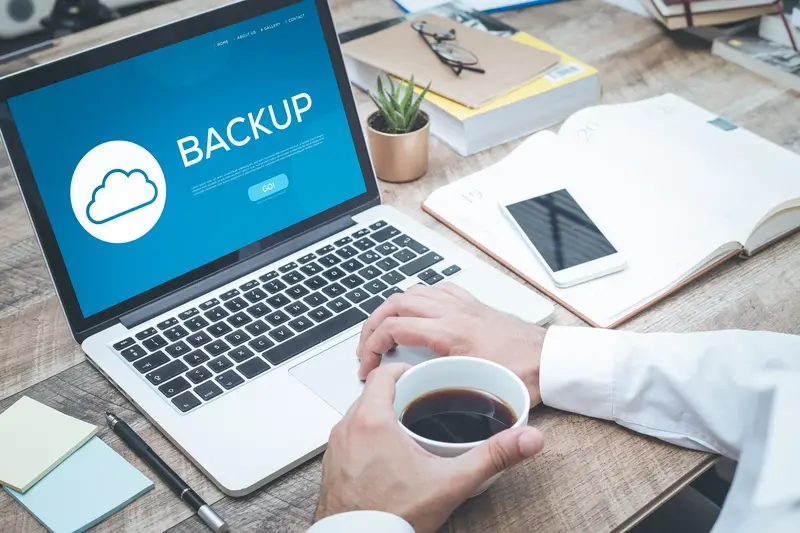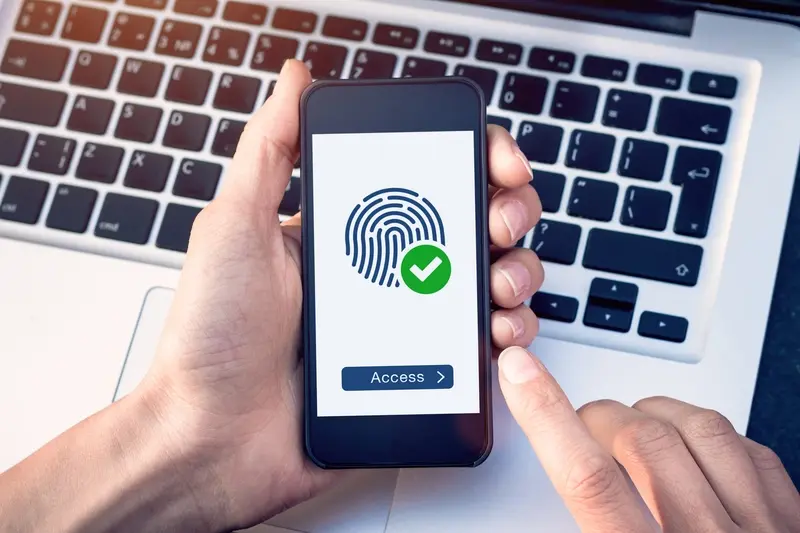What Data Can I Collect in My Mobile App?
As you embark on your mobile app development journey, one of the most crucial decisions you'll face is determining what data to collect from your users. It's a bit like deciding what questions to ask at a first meeting - you want to learn enough to provide value, but you don't want to appear intrusive or make anyone uncomfortable.
Whether you're developing a fitness tracker, a social media platform, or an e-commerce app, understanding data collection is essential for creating a successful application that serves your users' needs whilst respecting their privacy. Think of data as the compass that guides your app's journey - it helps you understand your users, improve their experience, and make informed decisions about future developments.
Data tells stories about your users' needs and behaviours, but like any good story, it needs to be gathered and told responsibly.
In this comprehensive guide, we'll explore the various types of data you can collect through your mobile app, from basic profile information to complex behavioural patterns. We'll walk you through the essentials, just as we've done for countless clients over our eight years of app development experience. More importantly, we'll help you understand which data points are truly valuable for your specific app and how to collect them ethically.
You might be feeling overwhelmed by the possibilities and responsibilities of data collection - that's perfectly normal. By the end of this guide, you'll have a clear understanding of what data you can collect, what you should collect, and how to do it in a way that benefits both your users and your app's success. Let's begin this journey together.
Types of Mobile App Data
When you're planning your mobile app, understanding the different types of data you can collect might feel a bit overwhelming at first. Trust us - we've helped hundreds of businesses navigate these waters, and we'll break it down into simple, digestible pieces.
Think of mobile app data like the ingredients in your kitchen cupboard. Just as you wouldn't use every spice for a single dish, you don't need to collect every type of data for your app. The key is choosing the right ingredients that will make your app truly valuable for your users.
Here are the main categories of data that modern mobile apps can collect:
- Personal Information: Names, email addresses, and profile details
- Behavioural Data: How users interact with your app
- Location Data: Where users are when using your app
- Device Information: What phones or tablets they're using
- Performance Metrics: How well your app is running
- Transaction Data: Purchase history and patterns
- Usage Statistics: When and how often they use specific features
- Social Data: Information from connected social media accounts
Each of these categories serves different purposes, and in the following chapters, we'll explore each one in detail. Remember, just because you can collect certain data doesn't always mean you should. The best approach is to focus on collecting data that genuinely helps improve user experience or provides clear value to your business objectives.
Let's dive deeper into each category and discover how they might benefit your specific app...
Personal and Profile Data
When you download a new app, you've probably noticed that familiar moment when it asks for some basic information about you. It's a bit like introducing yourself at a party - you share what you're comfortable with to help break the ice.
Basic Profile Information
The most common personal data that mobile apps collect includes your name, email address, age, and sometimes your profile picture. Think of it as creating your digital identity card within the app. Some apps might also ask for additional details like your gender, occupation, or interests to help personalise your experience.
Optional Profile Enrichment
Beyond the basics, many apps offer the chance to build a richer profile. You might choose to add your favourite hobbies, link your social media accounts, or share your preferences. It's rather like decorating your own digital space - you decide how much personality to inject into it.
What's crucial to understand is that you're in control of what you share. Just as you wouldn't tell a stranger your life story on your first meeting, you shouldn't feel pressured to provide every detail an app requests. Many apps make most profile fields optional, letting you share information at your own pace.
Remember those old-school paper forms where you had to fill in every single box? Modern apps are much more flexible. You can often start using them with minimal information and gradually build your profile as you become more comfortable with the service. It's rather like getting to know a new friend - the relationship develops naturally over time.
User Behaviour and Activity
Understanding how people use your app is like being a detective piecing together clues about what makes your users tick. At Glance, we've seen firsthand how valuable this information can be for creating better, more engaging apps that truly serve their purpose.
What User Behaviour Data Tells Us
User behaviour data paints a picture of how people interact with your app. Think of it as a digital footprint that shows which features they love, where they might get stuck, and what keeps them coming back for more. Common behavioural data points include screen views, button clicks, time spent on different sections, and navigation patterns.
The most successful apps aren't just built on assumptions - they're shaped by real user behaviour and meaningful interactions.
Have you ever wondered why some apps seem to know exactly what you want? That's because they're carefully analysing behavioural patterns. For instance, if you're developing a fitness app, you might track which workouts are most popular at different times of day, or which exercise videos users tend to pause or replay.
Making Sense of Activity Patterns
Beyond basic interactions, you can collect data about session length, frequency of use, and feature adoption rates. This helps identify your app's 'sticky' features - the ones that keep users engaged. For example, if you notice users regularly abandoning your checkout process at a particular step, that's valuable intelligence for improvement.
Remember, whilst collecting behavioural data is incredibly useful, it's essential to be transparent about what you're tracking and why. Your users should always feel their privacy is respected and protected.
Location and Movement Data
Understanding where and how your users move about can provide invaluable insights for your app - rather like having a friendly guide who knows exactly where your customers are going! But it's essential to approach location data collection thoughtfully and transparently.
Types of Location Data You Can Collect
- GPS coordinates (latitude and longitude)
- Movement patterns and travel speeds
- Frequently visited locations
- Time spent at specific places
- Altitude and elevation changes
- Indoor positioning data (when available)
Real-World Applications
Think about how helpful location data can be in everyday situations. If you're developing a fitness app, tracking movement helps users monitor their running routes and daily step counts. For a food delivery service, precise location ensures hot meals arrive at the right doorstep. Even a weather app benefits from knowing exactly where users are to provide accurate forecasts.
However, we understand that location tracking can feel a bit like being followed around by an overeager shopping assistant - somewhat intrusive if not handled properly. That's why it's crucial to only collect location data when it genuinely improves the user experience. For instance, there's no need for a calculator app to know where its users are!
Remember to always provide clear benefits in exchange for location access. Whether it's helping users find the nearest petrol station or alerting them about nearby friends, make sure the value proposition is transparent. And of course, always include an easy way to adjust or disable location tracking - it's not just good practice, it's about respecting your users' privacy choices.
Device Information
When building a mobile app, understanding your users' devices helps create a better experience for everyone. Think of it like knowing whether your friend has the latest iPhone or a three-year-old Android device - this knowledge helps you tailor your communication accordingly.
Essential Device Data Points
Your app can collect various bits of information about the devices it's installed on. This isn't about being nosey - it's about ensuring everything works smoothly, much like how a mechanic needs to know what type of car they're working with.
- Device model and manufacturer (e.g., iPhone 14, Samsung Galaxy S23)
- Operating system and version (iOS 16.5, Android 13)
- Screen resolution and display settings
- Available storage space
- Battery level and charging status
- Network connection type (WiFi, 4G, 5G)
- Device language and region settings
Why This Information Matters
Having this information helps in numerous ways. For instance, if you know a user's device has limited storage, you might offer them a 'lite' version of certain features. Or if they're running an older operating system, you can provide compatibility warnings before they attempt to use newer features.
Remember though, whilst collecting device information is generally less sensitive than personal data, it's still important to be transparent about what you're collecting and why. Think of it as being a good neighbour - always letting people know what's happening and why it benefits them.
Technical Performance Data
When it comes to making your app run smoothly, technical performance data is like having a doctor's stethoscope for your application. It helps you understand what's happening under the bonnet and ensures your users have the best possible experience.
Think of technical performance data as your app's vital signs. Just as you might check your heart rate during exercise, your app needs regular check-ups too. This data helps you spot potential issues before they become problems that frustrate your users - and we all know how annoying it is when an app keeps crashing!
Technical performance data isn't just about fixing problems; it's about preventing them before your users even notice they exist.
Key Performance Metrics to Monitor
The most crucial technical performance data points typically include crash reports, app load times, screen rendering speeds, and battery usage. Remember when Pokemon GO first launched? The app's battery consumption was so high that people started carrying power banks everywhere! That's exactly the kind of issue that performance monitoring helps you avoid.
Making Sense of the Numbers
While it might seem overwhelming at first, these metrics tell an important story about your app's health. If users are experiencing frequent crashes in Birmingham but not in Manchester, that's valuable information. Or perhaps your app runs brilliantly on newer iPhones but struggles on older Android devices - that's something you'd want to know about!
By collecting and analysing this data, you can make informed decisions about optimisation and ensure your app provides a consistent, reliable experience for all users, regardless of their device or location.
In-App Purchase Data
When users make purchases in your app, whether it's buying premium features, virtual goods, or subscriptions, you're collecting valuable transaction data. Think of it like keeping a detailed receipt book, but much more insightful!
What Purchase Data Can You Track?
Purchase data typically includes transaction dates, item costs, payment methods, and purchase frequency. But there's more to it than just pounds and pence. You can also gather information about which features users value most, when they're most likely to make purchases (anyone else notice those late-night shopping sprees?), and what promotional offers resonate with your audience.
Why This Data Matters
Understanding your users' purchasing behaviour helps create a better app experience for everyone. For instance, if you notice many users abandon their shopping cart when buying premium features, you might need to simplify your checkout process. It's like being a shopkeeper who notices customers struggling with a troublesome door - you'd want to fix that, wouldn't you?
This data can also help you make informed decisions about pricing strategies, special offers, and new features. For example, if you notice most of your UK users prefer making purchases on payday, you might time your promotions accordingly. Just remember, while collecting purchase data is incredibly useful, it's essential to handle this sensitive information with care and in compliance with financial regulations and data protection laws.
Remember to always be transparent with your users about what purchase data you're collecting and how you're using it. After all, trust is the foundation of any good relationship, including the one between your app and its users.
Legal Requirements and Privacy Laws
When collecting data through your mobile app, it's crucial to understand and comply with various privacy laws and regulations. We know this might sound daunting - after all, who enjoys reading legal documents? But think of these requirements as your app's Highway Code; they're there to protect everyone involved.
The landscape of data protection is constantly evolving, with new regulations emerging regularly. Currently, the most significant laws you'll need to consider include the GDPR in Europe, CCPA in California, and the UK's Data Protection Act 2018. These frameworks share common principles about transparency, user consent, and data security.
Key Legal Requirements for Mobile Apps
- Obtain explicit user consent before collecting any personal data
- Provide a clear, accessible privacy policy
- Allow users to access and delete their personal data
- Implement appropriate security measures to protect user data
- Report any data breaches to relevant authorities
- Handle children's data with extra care and parental consent
Remember that lovely mobile game Pokémon GO? When it launched in 2016, it faced significant privacy concerns because of its location tracking features. This serves as a reminder that even the most popular apps must prioritise user privacy and legal compliance.
Our advice? Always consult with legal experts when setting up your data collection processes. While it might seem like an extra expense initially, it's far more cost-effective than dealing with potential fines or reputation damage later. Think of it as an insurance policy for your app's future success.
Best Practices for Data Collection
After helping hundreds of businesses develop their mobile apps, we've learned that thoughtful data collection isn't just about gathering information—it's about building trust with your users. Let's explore some proven best practices that will help you collect data responsibly and effectively.
The Transparency-First Approach
Just like you wouldn't appreciate someone rummaging through your kitchen drawers without asking, your users want to know what data you're collecting and why. Always be upfront about your data collection practices and explain the benefits in simple terms. For instance, if you need location data to help users find nearby coffee shops, tell them exactly that!
Remember: Collecting data isn't about what you can gather, but what you should gather to provide genuine value to your users.
Smart Collection Strategies
Think of data collection like packing for a holiday—take what you need, leave what you don't. Start with the essentials and gradually collect more data as your relationship with users grows. We've found that apps that follow this approach typically see higher user retention rates and better reviews.
Some practical tips we've learned along the way: collect data in small chunks rather than overwhelming users with lengthy forms, offer clear opt-out options, and regularly review and clean your collected data. It's also worth setting up automated systems to delete outdated information—rather like clearing out your wardrobe of clothes you haven't worn in years.
Finally, always remember to test your data collection methods with real users. Their feedback is invaluable in striking the right balance between gathering useful information and respecting privacy.
Conclusion
Throughout this guide, we've explored the vast landscape of mobile app data collection, and you might be feeling a bit overwhelmed by all the possibilities - and responsibilities - that come with it. That's perfectly normal, as data collection is indeed a complex topic that requires careful consideration.
Remember that collecting data isn't about gathering everything you possibly can; it's about thoughtfully selecting the information that will genuinely help you create a better experience for your users. It's rather like being a good host at a dinner party - you want to know enough about your guests to make them comfortable and cater to their needs, but you wouldn't dream of asking them to share their deepest secrets!
As you move forward with your app development journey, keep in mind that transparency and respect for user privacy should always be your north star. Whether you're collecting basic profile information or detailed behavioural data, your users are trusting you with their information. Honour that trust by following the best practices and legal requirements we've discussed.
The mobile app landscape continues to evolve, and so do data protection regulations and user expectations. Stay informed about these changes, regularly review your data collection practices, and always ask yourself: "Is this data truly necessary for improving my users' experience?"
We hope this guide has given you the confidence to make informed decisions about data collection in your mobile app. Remember, you're not just collecting data - you're building relationships with your users, one thoughtful interaction at a time.
Share this
Subscribe To Our Learning Centre
You May Also Like
These Related Guides

How Do I Backup My App's Data In The Cloud Safely?

Can I Store Patient Data in My Healthcare App?



